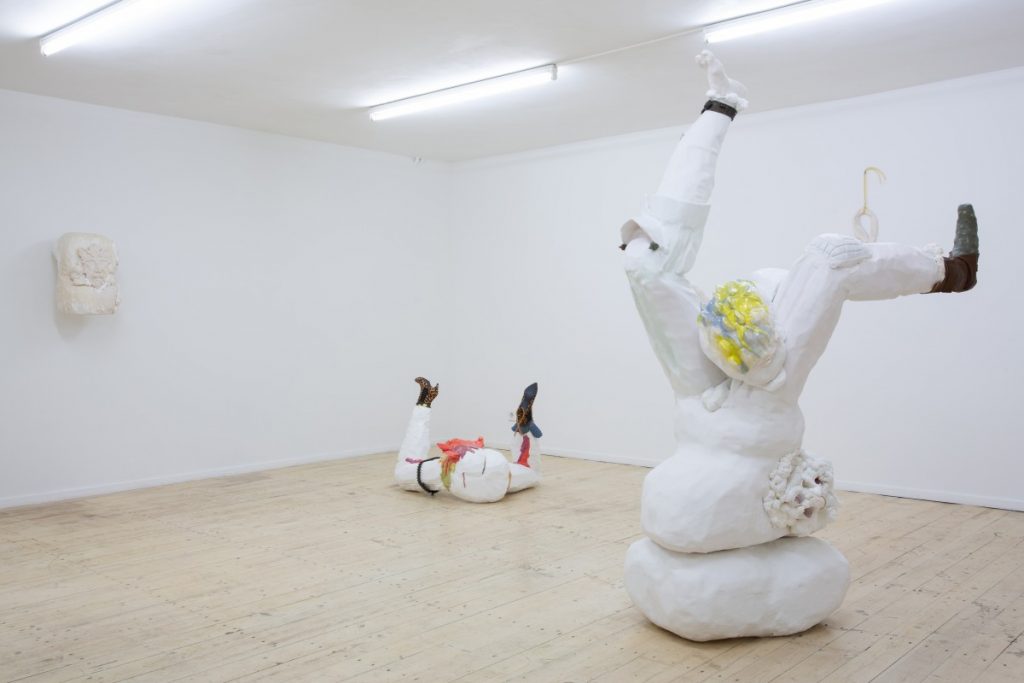In the autumn of 2022 estonian artist’s Mari Männa exhibition „Day 238“ was held at our office which we share with project space „Editorial“. Because of that, we share artist‘s literary recommendations.
B. O’Doherty, Inside the White Cube (1999)
Text that I am always thinking of while creating something in a gallery space. O’Doherty is writing about how artists started to activate the gallery space in the 1960s and how it shifted our understanding. He is discussing the role of viewers in the gallery space and how the artist might activate their consciousness. Furthermore, he investigates the ceiling, floor, walls, the outside space of a gallery, and finally, the gallery as a context. I often open the book again to look up some modern art references or witty jokes he brought up while making his points.
R. Morris, On Sculpture. Artforum: vol. 4, no. 6, February (1966)
This essay is about sculpture and its relationship with the body in space. Morris is writing as practising artist so his text is very relatable.
Jyrki Siukonen Hammer and Silence
Siukonen’s phd thesis is probably the most cited text by all sculptors, blacksmiths or crafts artists in Estonia and Finland as it manifests something really important for us. Siukonen has convincingly argued for the physicality of art making and verbalised how we sense time when working in a studio with our hands and how intuitively we are using tools in our creating process. This book is easy to read and pleasurably philosophical.

J. G. Herder. Toim J. Gaiger. Sculpture: Some Observations on Shape and Form
While working on my master’s project and trying to make sense of the tactility of sculpture, I found the theorist Johann Gottfried Herder (b. 1744), who is an important Enlightenment philosopher. I was surprised that he has written something about sculpture and among other things, about tactility. Since the sculpture is a three-dimensional form, it must be understood primarily through the sense of touch, and what is seen with the eye, remains distanced. Herder recognized that the touch itself is related to the body and therefore related too little to the „higher“ sense. His notions can be conservative yet very interesting.
Sol Lewitt’s letter to Eva Hesse (and Eva Hesse’s diaries)
I think every young artist might have a period in their life when it is important to receive support from another artist, who is an authoritarian figure for them. From time to time, I have been lucky enough to encounter this type of relationship and that has been great for me.

Seasonal, my late autumn picks:
Kivirähk Rehepapp ehk November (2000)
A ridiculously funny book about Estonians, but sadly that book has not been translated yet into English. It also has an amazing movie version by Rainer Sarnet.
Mati Unt The Autumn Ball: Scenes of City Life (1979)
Always pleasarable to read, interesting characters. Movie version by Veiko Õunpuu.
Lõpetuse ingel: märkmeid sügissaarelt, Tõnu Õnnepalu
Õnnepalu has written about how, in order to create, he has to get rid of distractions and isolate himself from the world. And suffer. Interesting thoughts but his books can be also very dangerous reading for young artists.

Credits of the photos:
Main photo: Mari Männa personal archive photo.
Exhibition photos by Ugnius Gelguda

